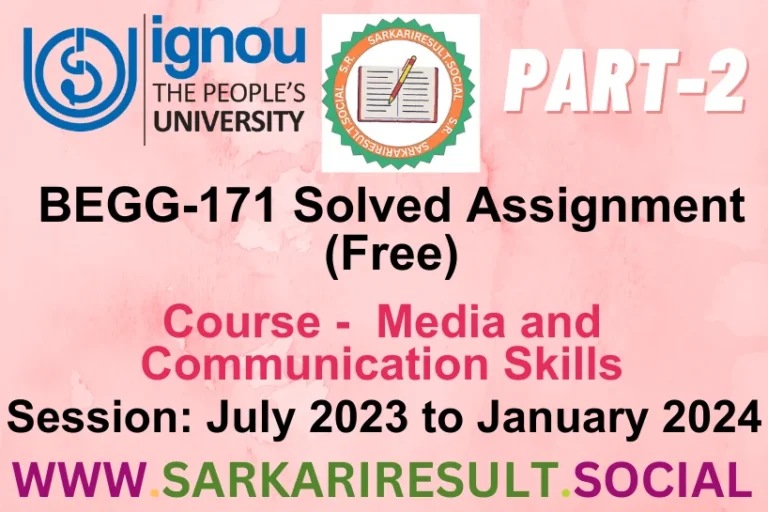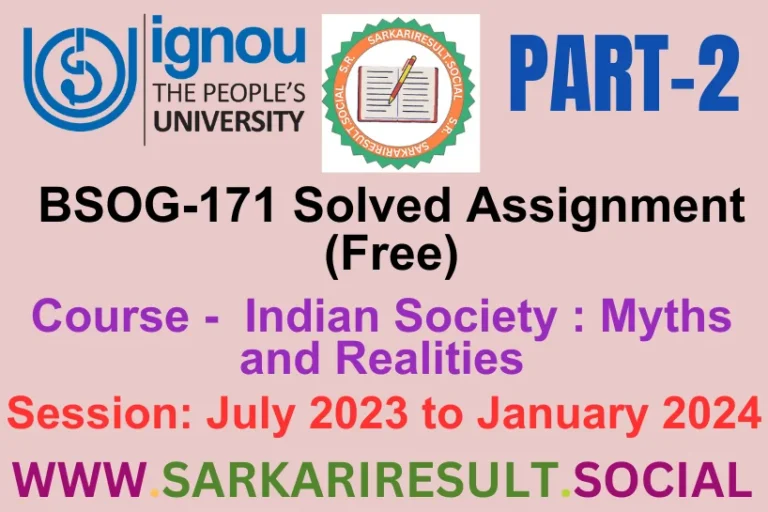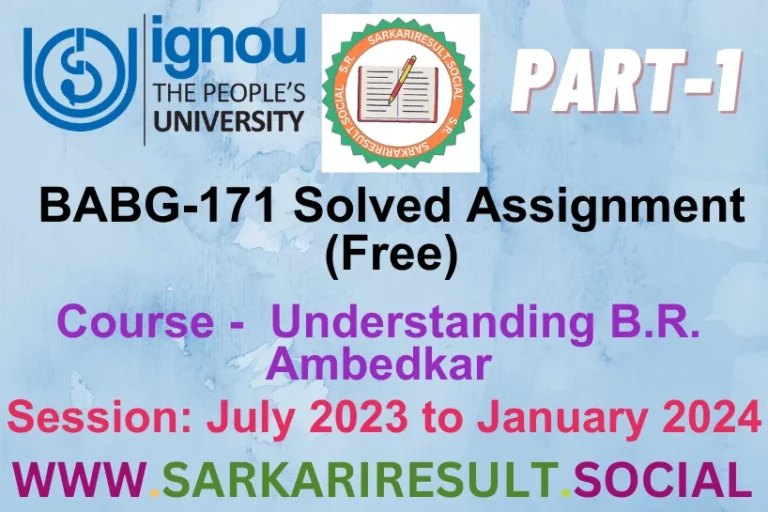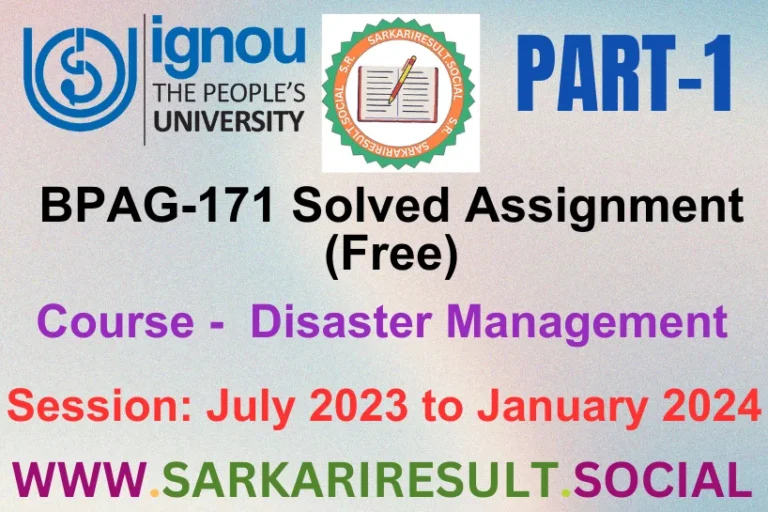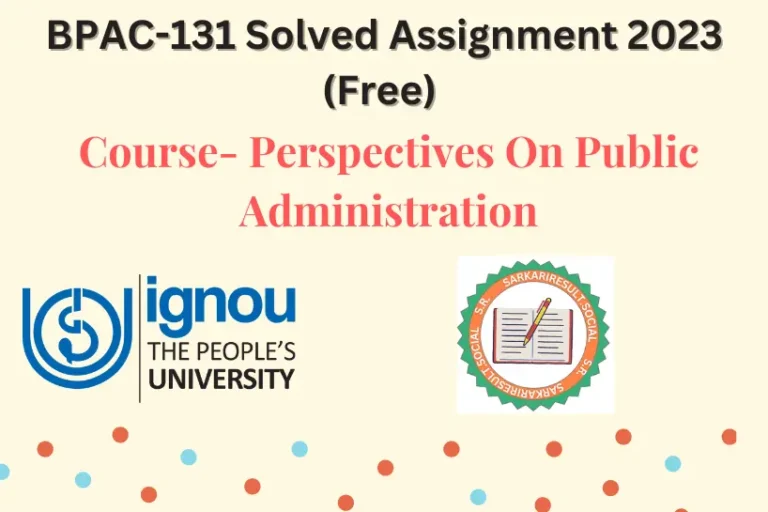BHIC 134 IGNOU Solved Assignment 2023-24 (free) Part -2
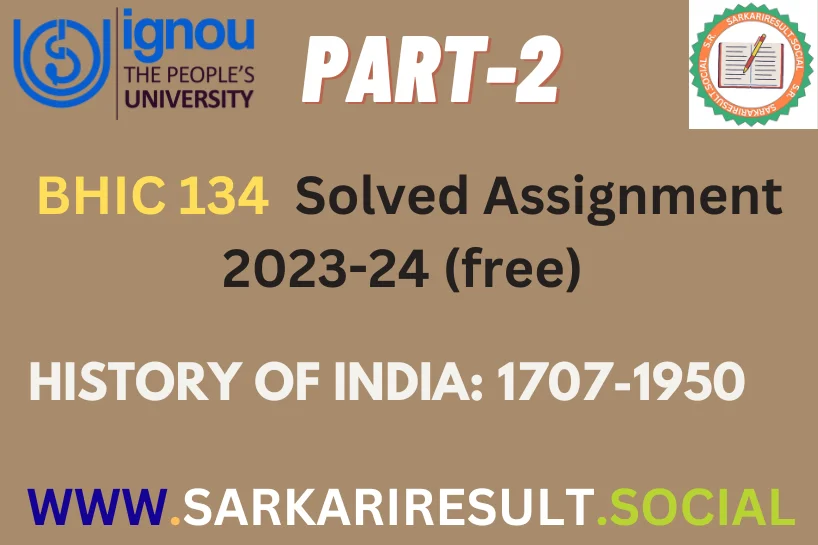
BHIC 134 IGNOU Solved Assignment 2023-24 (free) Part -2
Deepen your historical understanding through BHIC 134 IGNOU Solved Assignment 2023-24 (free) Part -2, comprising three insightful questions, each inviting a focused 250-word response. Our comprehensive solutions maintain academic rigor while exploring within specified word limits. Enhance your grasp of historical intricacies, fulfill the criteria effectively, and excel in your academic journey. Access BHIC-134 IGNOU Assignment 2 solutions to broaden your historical insights and refine your analytical approach to scholarly investigations.

3. What were the main contributions of the Orientalists? Discuss.
Ans. The Orientalists, a group of scholars primarily from Europe, made significant contributions to the study and understanding of Eastern cultures, languages, religions, and civilizations during the 18th and 19th centuries.
Also Read This: BHIC 134 IGNOU Solved Assignment 2023-24 (free) Part -1
Main Contributions:
1. Language Studies: They were instrumental in deciphering and studying ancient languages such as Sanskrit, Arabic, Persian, and Chinese, which facilitated the translation of important literary and religious texts into European languages. This laid the foundation for comparative linguistic studies.
2. Translation of Texts: Orientalists translated a wide range of ancient Eastern texts, including religious scriptures like the Vedas, Upanishads, Quran, and Buddhist scriptures. These translations made Eastern philosophical, religious, and literary works accessible to Western audiences, fostering cross-cultural exchange and intellectual dialogue.
Also Read This: Check BGDG 172 IGNOU solved assignment 2023-24 (Free)
3. Archaeological and Historical Research: Orientalists conducted archaeological excavations and historical research, uncovering ancient civilizations and contributing to the understanding of Eastern history, culture, and art. Their findings provided valuable insights into ancient societies and their contributions to human civilization.
4. Academic Institutions and Journals: They established academic institutions, libraries, and scholarly journals dedicated to Oriental studies. Institutions like the School of Oriental and African Studies (SOAS) in London were founded to promote the study of Eastern languages, cultures, and societies.
Also Read This: Check top Begae 182 IGNOU solved assignment 2023-24 (Free)
5. Cultural Understanding: Orientalists played a pivotal role in promoting cultural understanding and fostering interest in Eastern cultures among Western scholars and the general public. Their works helped dispel myths and stereotypes about the East, contributing to a more nuanced and informed view of Eastern civilizations.
Despite criticisms of cultural bias and Eurocentrism, the contributions of Orientalists significantly impacted academic disciplines such as linguistics, history, anthropology, and religious studies. Their efforts expanded the knowledge of Eastern civilizations, laying the groundwork for cross-cultural dialogue and shaping modern academic understanding of Eastern cultures and societies.
Also Read This: BHIC 133 IGNOU Solved Assignment 2023-24 (free) Part -1
4. Comment on the debate over the education policy in the 19th century.
Ans. In the 19th century, the debate over education policy was a significant aspect of social and political discourse in various parts of the world, particularly in Europe and its colonies. This era saw contrasting perspectives and debates regarding the purpose, content, and accessibility of education.
Key Points in the Debate:
1. Role of Education: There was a divide between those advocating for traditional, religious-based education emphasizing moral and spiritual development and those supporting a more secular, practical education focusing on modern subjects like science, technology, and literature.
Also Read This: BHIC 133 IGNOU Solved Assignment 2023-24 (free) Part -2
2. Access to Education: Discussions revolved around accessibility to education. Reformers argued for broader access to education for all, including marginalized groups, women, and lower socio-economic classes, challenging the elitist and exclusive nature of education systems.
3. Language of Instruction: Language was a contentious issue in education policy. Debates centered on whether education should be delivered in the vernacular languages or in the dominant colonial languages, influencing cultural preservation and assimilation.
Also Read This: BHIC 133 IGNOU Solved Assignment 2023-24 (free) Part -3
4. State Involvement: There were debates about the role of the state in education. Some advocated for state intervention and regulation to ensure standardized and uniform education, while others stressed the autonomy of educational institutions.
5. Impact of Industrialization: The rise of industrialization prompted discussions on the relevance of education in preparing individuals for the workforce, fostering skilled labor, and addressing societal needs.
Outcome and Legacy:
The debates over 19th-century education policy led to significant reforms in educational systems worldwide. This era witnessed the establishment of new educational models, the expansion of schooling for a broader population, the integration of practical and modern subjects, and the diversification of curricula. These changes set the stage for the modern education systems we see today, impacting access, curriculum, and the purpose of education in society. The debates also reflected broader societal shifts, ideologies, and emerging notions of social progress, shaping educational policies for generations to come.
Also Read This: BHIC 131 IGNOU Solved Assignment 2023-24 (free) Part -1
5. What was the role of the Constituent Assembly in shaping the Indian Constitution?
Ans. The Constituent Assembly of India played a pivotal role in shaping the Indian Constitution, serving as the primary body responsible for drafting and formulating the foundational document of independent India.
Key Contributions:
1. Drafting the Constitution: The Constituent Assembly comprised representatives from diverse backgrounds, communities, and ideologies. It deliberated extensively over various aspects of governance, rights, and principles, leading to the formulation of the Constitution.
Also Read This: BHIC 131 IGNOU Solved Assignment 2023-24 (free) Part -2
2. Debates and Discussions: Members engaged in rigorous debates, discussions, and negotiations on critical issues like fundamental rights, federalism, the role of the President, and the structure of government. They drew from various sources, including parliamentary systems worldwide and India’s historical and cultural heritage.
3. Committees and Experts: To streamline the process, several committees were formed, such as the Drafting Committee chaired by B.R. Ambedkar. These committees sought input from legal experts, scholars, and representatives to create a comprehensive and inclusive Constitution.
4. Incorporating Diverse Perspectives: The Assembly accommodated diverse viewpoints and ideologies, striving for a balance between the aspirations of a newly independent nation, protection of individual liberties, and social justice for all citizens.
Also Read This: BHIC 131 IGNOU Solved Assignment 2023-24 (free) Part -3
5. Adoption and Enactment: On January 26, 1950, the Indian Constitution came into effect, reflecting the collective wisdom, ideals, and aspirations of the Constituent Assembly. It laid the foundation for democratic governance, fundamental rights, and the rule of law in India.
The Constituent Assembly’s meticulous and inclusive approach, fostering consensus-building and incorporating diverse perspectives, ensured that the Indian Constitution became a visionary and enduring document. Its contributions shaped India’s governance framework, ensuring democratic principles, fundamental rights, and a framework for inclusive development. The Assembly’s efforts remain a testament to the nation’s commitment to constitutionalism and democratic values.

